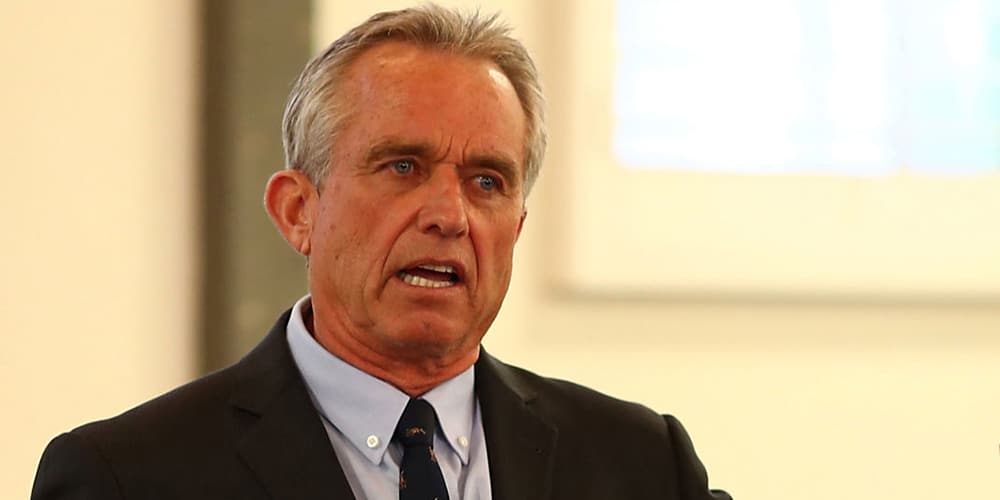

The Plague of the Poor
A dangerous COVID-era authoritarianism targets the most vulnerable—the poor—and threatens the foundation of democratic society
When President Joe Biden announced sweeping new vaccine mandates for 100 million Americans, he stated that these measures were necessary to “protect vaccinated workers from unvaccinated co-workers.” But isn’t the vaccine itself supposed to be what protects the vaccinated? Not well enough, apparently. So whose interests are served by mandating a leaky vaccine that prevents neither infection nor transmission of a disease that is chiefly dangerous to people over 75 or with serious preexisting medical conditions?
“The unvaccinated” is a group defined more by class than by any other characteristic (perhaps besides age). Although the Biden administration has invested $10 billion toward expanding access to vaccines and building “vaccine confidence” in low-income areas, staunch resistance remains in many working-class and minority communities. In New York City for example, only 28% of the city’s Black residents aged 18 to 44 were vaccinated as of August 2021, when the city began paying residents $100 each to receive the vaccine. When that didn’t work, the city embraced a vaccine passport system that would exclude the majority of young Black New Yorkers from most indoor and civic activities, amounting to a de facto form of segregation.
During lockdowns, essential and frontline workers bore the brunt of COVID-19 cases while affluent professionals stayed home, teleworked, and ordered delivery. These workers were once called “heroes.” Now the Zoom class labels the same workers “anti-vaxxers” if they prefer to rely on the natural immunity many of them have already acquired from previous infections. While national news outlets repeatedly run stories of unvaccinated patients taking up too much space in ICUs, almost half of the COVID-19 cases in hospitals are mild or asymptomatic. Many hospitals are actually facing a severe nursing shortage because of vaccine mandates, and overcrowding in American hospitals is mainly a symptom of chronic downsizing and cuts. In 1975 there were 1.5 million hospital beds available in the United States; in 2019 there were only 920,000. To make matters worse, hospitals lost an estimated $50 billion a month during lockdowns in 2020.
Meanwhile, the provision of COVID-19 vaccines, personal protective equipment, and testing created 40 new billionaires the world over. Moderna, a company that had never brought a product to market before, received a license from the government to produce a liability-free vaccine and one year later reached a valuation of $100 billion. Pfizer projects that it will make $33.5 billion in vaccine revenue this year, and the company’s CEO now says that we will need “annual vaccination” to protect against COVID-19.
Proponents of vaccine mandates and passports claim that such policies will get us “back to normal.” But the increasingly unequal world that these requirements are actually building is anything but normal. It is a world in which the most basic forms of participation in society are contingent on submitting to an often unwanted medical procedure for which there is no long-term data. It is a world in which fundamental human freedoms—starting with the freedom to ask questions and to choose what substances go into one’s body—are now being suspended and mocked by politicians, judges, and journalists whose jobs are ostensibly to safeguard those freedoms.
As the $1.3 trillion pharmaceutical industry increasingly captures the media, elected officials, and scientific institutions, the public health establishment that many people trusted to protect their well-being has become a tool of profit and control. If we fail to resist this establishment now, the harms caused by a medicalized “show your papers” regime will far exceed the threat posed by the virus itself.
Political arguments for universal COVID-19 vaccination rely on two central misconceptions: first, that when people receive COVID-19 vaccines they are protecting others, and second, that vaccination can provide equal risk reduction for everyone.
The first is driven by confusion over the term “vaccine,” which can refer to any antigenic pharmaceutical that teaches the body’s immune system to respond to a pathogen. A vaccine can provide sterilizing immunity by eliciting neutralizing antibodies that prevent the virus from entering a cell, or it can merely protect against symptomatic disease without fully stopping infection.
Unlike a measles or smallpox vaccine, existing COVID-19 vaccines do not provide sterilizing immunity. The mRNA vaccines are designed to instruct cells in how to make a viral protein, prompting the immune system to generate non-neutralizing antibodies that protect against severe symptoms. Despite hopes that curbing illness would also reduce viral shedding, there is evidence from multiple studies that vaccinated people can and do spread the virus and that the delta variant can circulate through a vaccinated population. One study found that the Pfizer vaccine may be only 42% effective against the delta variant. This means that under a vaccine passport system, an unvaccinated person without COVID-19 would be barred from an establishment, while a vaccinated person could enter even if they had a symptomatic breakthrough case. How logical is that?
Furthermore, some studies have found that natural immunity from COVID-19 infection is equivalent or superior to vaccination. One Israeli study found that people who received two doses of the Pfizer vaccine could be 27 times more likely to have a case of the delta variant than those with natural immunity. By one estimate SARS-CoV-2 mutates almost once a week, 50% faster than previously thought, and no matter how high vaccination rates get, the virus could continue to mutate in animal reservoirs. This is one of the reasons why, unlike smallpox or polio, which do not have animal hosts, SARS-CoV-2 will likely never be eradicated. The virus will simply enter an endemic phase and most people will eventually be exposed to it.
The second major misconception is the idea that, even if the vaccines don’t stop viral spread, everyone can derive statistically meaningful benefit from vaccination against COVID-19. As has been thoroughly demonstrated, SARS-CoV-2 is not an equal opportunity virus. Ninety-five percent of U.S. COVID-19 deaths have been among people 50 or older, and nearly 80% of deaths occurred in people 65 or older. About 78% of people in the United States who were hospitalized for COVID-19 were overweight or obese. A study of hospitalized COVID-19 patients found that 94.9% of them had one or more underlying conditions. For people between 0 and 19 years old, the infection survival rate is 99.9973%. The cost-benefit analysis for vaccinating a diabetic 75-year-old is therefore quite different from the cost-benefit analysis for vaccinating a 12-year-old. Because natural immunity appears to be robust and the COVID-19 vaccines do not eliminate transmission, many of those who make the personal choice to forgo vaccination are in fact making a decision that is no less rational or science-based than those who want the vaccine.
On average, it takes 10.7 years to develop and test a new vaccine. The current COVID-19 vaccines were developed in less than a year and clinical trials for the Pfizer vaccine are not expected to end until 2023. Under the 2005 Public Readiness and Emergency Preparedness (PREP) Act, the COVID-19 vaccine manufacturers are shielded from legal liability, even for severe side effects. A recent preprint study analyzing trends from the Vaccine Adverse Event Reporting System (VAERS) found that the risk of vaccine-related myocarditis in 12- to 15-year-old boys may be up to six times greater than their risk of COVID-19 hospitalization. Due to reports of missed and irregular periods, the NIH has also been forced to fund studies to look into the effects of COVID-19 vaccines on menstruation.
The principle of informed voluntary consent dictates that each individual must be given accurate information about a procedure’s benefits, risks, and alternatives. Many Americans got vaccinated thinking that it was a ticket to freedom or a panacea that would provide full protection with no downsides. For others, there is now no possibility of consent if they also want to keep their jobs and participate in society: The decision to be vaccinated is being made for them by their employers or elected officials. While many point out that we have long had vaccine mandates (for polio as a requirement for child care and elementary schooling, for example), requiring proof of vaccination at restaurants, gyms, and entertainment venues is coercion of a different degree. Firing thousands of workers for not being vaccinated (including those, to repeat, who have natural immunity through infection) is also unprecedented, as is requiring children to take a vaccine they derive virtually no benefit from in order to comfort fearful adults.
The 1905 Supreme Court case of Jacobson v. Massachusetts is often cited as the legal basis for compulsory vaccination. Jacobson, who claimed that both he and his son had been injured by a previous smallpox vaccine, was required to pay a mere $5 fine for refusing another round of vaccination. He did not lose his livelihood or employment. It is rarely acknowledged that this decision also made possible the Supreme Court’s ruling in the 1927 case of Buck v. Bell, in which the court determined: “The principle that sustains compulsory vaccination is broad enough to cover cutting the Fallopian tubes.” This ruling legitimized eugenics laws and led to 70,000 forced sterilizations in the United States. In the Nuremberg trials Karl Brandt, the chief Nazi medical officer and Hitler’s personal physician, cited Buck v. Bell in his defense, as did other defendants.
Ultimately, medical force and coercion have an ugly history, and trust in a medical intervention must be earned. It cannot be commanded. Demonization and scapegoating do not inspire trust or confidence. They inspire fear and suspicion. While medical breakthroughs play an important role in human health, the decline in infectious diseases during the 20th century was not accomplished through modern medicine alone. Improvements in quality of life, sanitation, and food safety also played enormous roles in reducing mortality rates. This is part of why factors like diet, exercise, and sleep are all known to help the body’s immune system fight infections. Conspicuously, at no point have public health officials advised the public on how to reduce their risk of illness through vitamin D, nutrition, or physical activity, recommendations which aren’t as easily monetized. The focus has been exclusively on promoting taxpayer-funded vaccines produced by the pharmaceutical industry, which—among a population still reeling from an opioid epidemic—has rightfully earned widespread public distrust.
Trust in a medical intervention must be earned. It cannot be commanded.
From 1991 to 2017, the U.S. pharmaceutical industry had to pay out 412 criminal and civil settlements totaling $38.6 billion. Pfizer paid out the biggest health care fraud settlement in U.S. history as part of a $2.3 billion fine for illegal marketing, along with numerous other penalties. Pharma is the largest lobbying force in the United States, far outspending every other industry. In 2020, it spent $309 million on lobbying while the insurance industry spent $154 million, and oil and gas spent $112 million. In 2019, pharma spent $30 billion on marketing, $10 billion of which was spent on direct-to-consumer marketing and advertisements. Two-thirds of Congress has received money from the industry, and the FDA gets 75% of its drug review budget directly from pharma. Scott Gottlieb, the former head of the FDA who accelerated the agency’s drug approval process, now sits on Pfizer’s board.
The incestuous relationship between pharma, regulatory bodies, Congress, and the media has undermined the public’s ability to access unbiased information. Discussions about unpatented and repurposed antivirals or early outpatient treatments are vigorously censored online by monopoly tech platforms. As the unvaccinated are increasingly treated with open derision and scorn, the vaccination campaign has come to be defined by public shaming and disregard for medical ethics. In Florida, 75 doctors staged a symbolic walkout to express their frustration over unvaccinated patients; in Los Angeles a doctor complained of “compassion fatigue”; and in Alabama one doctor declared that he would refuse to treat unvaccinated people. Meanwhile, doctors who question COVID-19 orthodoxy are now being threatened with having their medical licenses revoked.
The official word from the White House and the CDC is that the vaccinated are being endangered by the unvaccinated, that any problems with a vaccine’s efficacy are the fault of those who didn’t take it, and that illness is the result of moral failure. These claims are designed to produce anger and division. They are being consciously used by political actors whose pressure campaigns have weaponized the word “science” against the critical thinking and inquiry that lie at the heart of the scientific method. The result can only be described as a danger to the foundations of a free and open democratic society.
Given that the COVID-19 vaccines do not appear to stop the spread of the virus, there is simply no medical or moral justification for vaccine mandates and passports. Those comfortable with these policies should ask themselves how they would feel if a fourth jab is soon required to buy groceries, take a domestic flight, rent an apartment, access a bank account, be admitted to an ER, or receive unemployment benefits after being fired for noncompliance. The emerging bio-authoritarianism that began as “two weeks to flatten the curve” will metastasize into something even more repellent and dangerous unless it is forthrightly opposed now, through boycotts, protests, lawsuits, labor action, and civil disobedience.
Alex Gutentag (@galexybrane) is a writer and Tablet columnist based in California.




